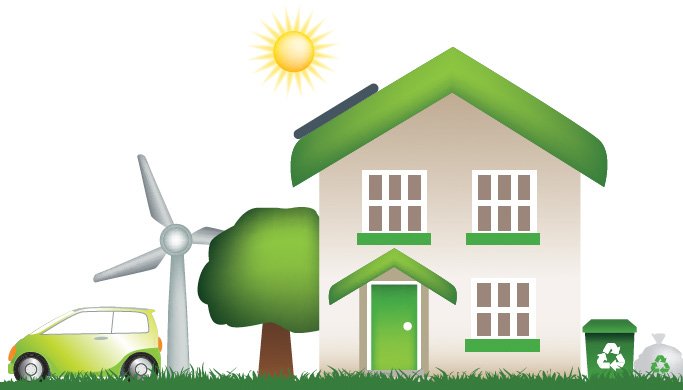 It's a commonly accepted idea in modern society that we all need to do our utmost to protect the environment in everything we do. Whether it's taking the bus once a week rather than driving your car or installing energy-efficient light bulbs, everyone needs to do their bit. This is also true for larger companies, including construction companies, most of whom now have their projects audited before hand in order to ensure that the environmental impact of their work is kept to an absolute minimum.
It's a commonly accepted idea in modern society that we all need to do our utmost to protect the environment in everything we do. Whether it's taking the bus once a week rather than driving your car or installing energy-efficient light bulbs, everyone needs to do their bit. This is also true for larger companies, including construction companies, most of whom now have their projects audited before hand in order to ensure that the environmental impact of their work is kept to an absolute minimum.
However, while large-scale construction projects are examined in minute detail to maximize their eco-friendly credentials, smaller scale projects - such as home improvement projects - often forego this important step. It's perfectly understandable. For the average homeowner undertaking a DIY home improvement project, budget and quality concerns provide enough to worry about without thinking about environmental protection.
That doesn't justify ignoring environmental concerns, though. Making your home improvement project more eco-friendly is as simple as making a few simple changes pre-, during and post-project.
Why bother worrying about the environment?
The environmental issue is so massive in scale that it's often difficult to comprehend how one person is able to make any difference whatsoever, especially as our politicians seem to be struggling to reach any consensus on a global plan to tackle climate change. Most people will have a ‘what's the point?' moment.
In reality, if everyone makes a small change, the cumulative effect could be hugely beneficial. While household emissions only account for a small percentage of the overall impact on the environment, making a switch to recycling, consuming less and thinking about how your actions impact on the environment really can help to reduce environmental damage and improve the prospects of our planet for ourselves and future generations.
How can you make a home improvement project more eco-friendly?
As mentioned earlier, making the average home improvement project more eco-friendly is relatively simple as the actual damage caused by a project won't be that significant in the grand scheme of things.
The main eco areas of concern with a home improvement project are energy consumption, emissions and waste produced as a result of the project - all areas that are easy to make sustainable!
So, what can you do?
- Use manual tools wherever possible
In the age of the power tool, the amount of manual labour someone working on a home improvement project has to undertake has dropped significantly. But while power tools have undoubtedly made things easier, some DIY'ers have become so reliant on them that they've forgotten the joys of a manually operated screwdriver or drill.
This over-reliance isn't just a laziness problem, however; power tools can consume massive amounts of energy, which damages the environment as well as increasing your energy bills!
Therefore, before you undertake a task, consider areas in which you can swap out a power tool for a manual tool - it might be a bit of extra work and take a little longer, but it'll reduce the eco impact of your project, and maybe help you to build some muscles too!
- Opt for energy efficient power tools
Of course, it would be a lot of hard work to discount power tools all together; the project would take longer, and probably wouldn't get finished to as high a standard as you would expect. Therefore, it's important to make sure that the power tools you use are energy efficient.
It's relatively easy to spot an energy efficient tool, with most products displaying their eco-friendly credentials either on the front or the back of the box. If you aren't sure, search for the product online and check out customer reviews.
Usually, you'll be able to pick an energy efficient tool for a reasonable price as energy efficiency is gradually becoming an industry standard.
- Reuse anything you can
Over the course of your project, the chances are you'll end up ripping out fixtures or having to knock something down. Before you go ahead and chuck the by-products of your demolition away, however, consider whether or not you can reuse them.
If you've ripped out some shelves to replace them for a new one, for example, you could salvage the old wood in order to reuse for another project. The amount of materials you'll be able to reuse may well be limited, but it's always worth thinking about.
- Recycle or resell responsibly
If you can't find a use for the by-products of your project then make sure you dispose of them in a responsible manner. This might mean taking your project trash down to the local recycling centre and disposing it of that way, or calling up your local authority to come and collect your rubbish and dispose of it responsibly.
Alternatively, you could try reselling your old materials online. If you're replacing your bathroom, you could sell your old bathtub or sink - you might be surprised by the amount of demand, even if the tub is broken (theatre groups, for example, are often on the lookout for ‘homeware' props for productions!).
- Consider the sustainability of the materials you use
A home improvement project is often about the ‘now' or the ‘near future', with homeowners usually not considering the long-term future of their finished project.
In these eco-aware times, it's important to think about the long-term eco-friendliness of any project you undertake. Will you be able to dispose of this project in a environmentally friendly way five years down the line? Could you possibly repurpose, reuse or renovate the project?
Making your home improvement projects environmentally-friendly is simple but vitally important. The tips above should hopefully help you on your way to sustainability!
Christopher Smith is writing on behalf of Excel Compressors, who specialise in selling air compressors for home improvement projects.







